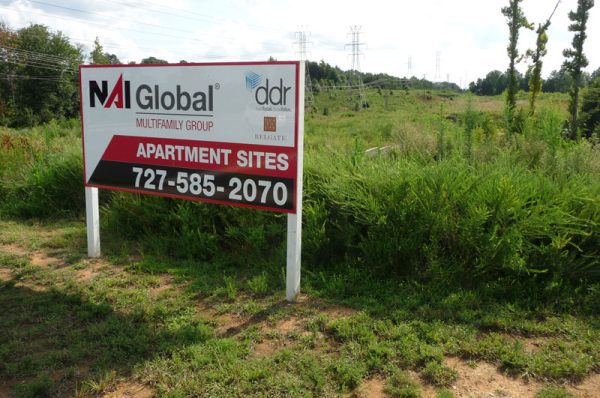Don’t derail transit areas with an auto mall

A University City-area rezoning petition quietly winding toward a public hearing Monday raises serious questions about whether the city can stand behind its plans for transit-friendly development along the proposed Blue Line Extension light rail line.
The case also highlights this fact: Today, almost all the properties in the station areas north of the NoDa neighborhood are zoned for uses and development patterns not in keeping with what should be near a light rail stop.
Will rezoning petition 2013-052 become just another example of a development request that trumps the public good in this developer-friendly city? Charlotte is a place where adopted plans and policies sometimes topple like dominos when the prospect of higher property tax returns or fancy developer renderings tempt the Charlotte City Council.
The site is 39 undeveloped acres within a comfortable quarter-mile walking and cycling distance from the planned University City Boulevard station. The site is zoned for multifamily housing, a transit-friendly use.
The agent, George Maloomian of Cambridge Properties, represents the Arden Group, a Winston-Salem real estate company. The developers want zoning to allow them to build an auto mall – a grouping of four proposed dealerships.
The problem is not necessarily the concept of an auto mall, but its location. An auto mall is the opposite of the sort of development that can best support light rail. Development near transit stops should encourage people to walk or bicycle; one of the whole points of transit is to get people out of their cars more often. A neighborhood that’s easy to walk in has a lot of housing, stores and workplaces nestled close together, preferably within a half-mile of the station. Big surface parking lots and far-apart buildings work against those aims.
Auto malls are basically a set of big-boxes sharing one site. The Hendrick Automotive Group opened an auto mall near Interstates 77 and 485 a year ago. Lexus, BMW and Mercedes-Benz dealerships sit amid their own parking domains. Hand-laid stone retaining walls, stainless steel handrails and large maple trees beautify the site.
It’s not impossible for big box-type stores to be designed to fit into transit-friendly development. Charlotte’s South End has a good example. Southborough hides a Lowe’s big-box behind 69 multifamily units, two restaurants and a four-story office building. It’s even farther from a nearby light rail stop than the proposed auto mall, And see photo at end for an auto dealership designed for an urban setting.
The case for the auto mall
The case in favor of the auto mall rests on three core propositions.
First, it keeps in Charlotte some auto dealers that might otherwise leave University City or hop to another county. Auto dealerships produce sales taxes, so that argument may resonate with City Council members. It’s championed by University City Partners, a nonprofit advocacy group for the area; Maloomian chairs its board but recused himself from the group’s vote to support the rezoning.
Second, say mall backers, there’s no market for multifamily housing at the site. According to Maloomian, Crescent Communities tried for four years but could not make a multifamily project there work. But could that have less to do with the market for multifamily at the site than with Crescent being in bankruptcy 2009-2010?
Finally, Maloomian says an auto mall would make dense housing closer to the transit stop even more desirable. But why not build housing at both locations? After all, six years after the first section of the Blue Line opened, multifamily construction is booming in South End.
The city planners’ position